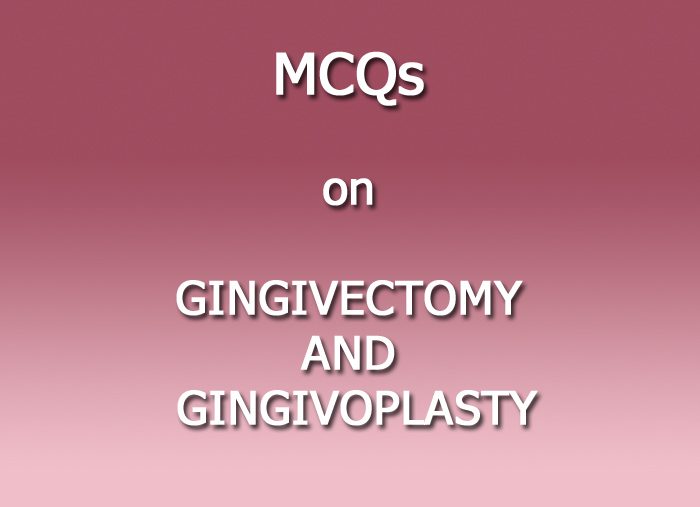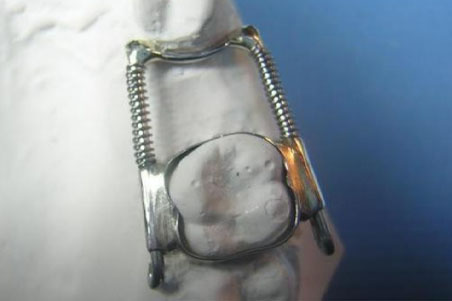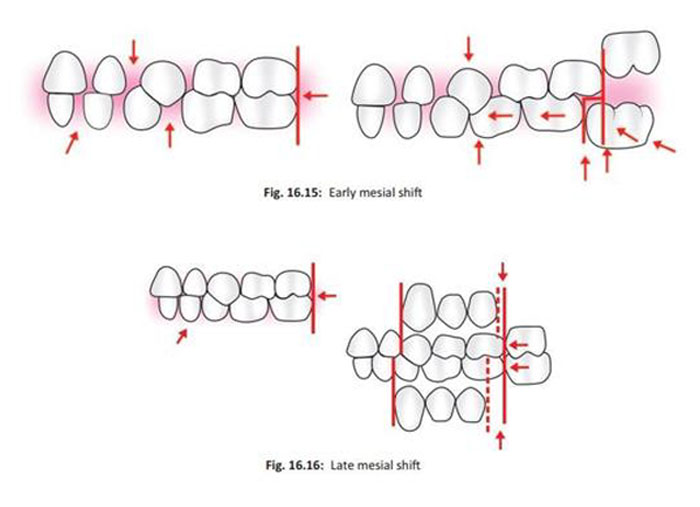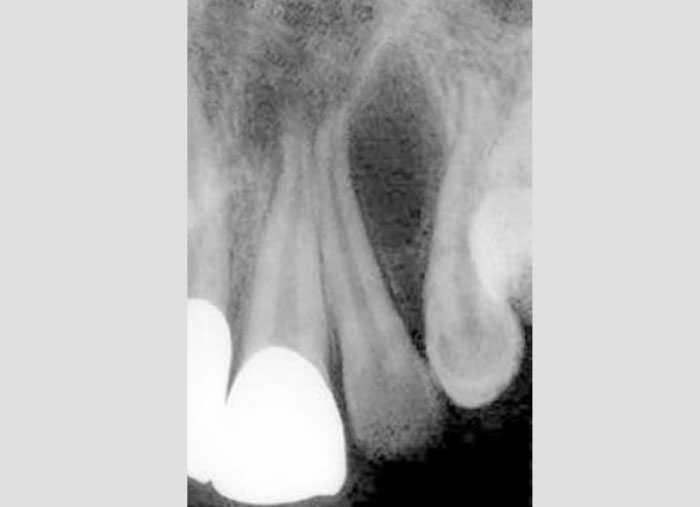- NEED HELP? CALL US NOW
- +919995411505
- [email protected]
1. Gingivectomy
a) Removes supra gingival pockets
b) Removes enlargements
c) Removes supragingival abscess
d) ALL
2.Electrocogulation is used for
a) Gingivectomy
b) Flap surgeries
c) Mucogingival surgeries
d) All of the above
3.The most recommended technique of gingivectomy is by means of
a) chemicals
b) lasers
c) electrodes
d) Scalpels
4.Indication of gingivectomy is
a) edema of gingiva
b) infrabony pockets
c) adequate attached gingiva
d) pocket depth below mucogingival junction
5.The reshaping process of gingiva in the absence of periodontal pocket is
a) curettage
b) gingivoplasty
c) gingivectomy
d) flap operation
6.Knife used for gingivectomy is:
a) Kirkland
b) Orbans
c)Merifield
d) Burkett’s
7.Gingival deformities due to fixed orthodontic treatment can be corrected by:
a) Gingivectomy
b) Gingivoplasty
c)Soft tissue curettage
d) All of the above.
8. A conventional gingivectomy will
a) Eliminate infra-bony pockets
b) Eliminate false pockets
c) Preserve width of attached gingiva
d)Facilitate healing by primary intention
9. Epithelialisation of gingivectomy wound is completed by
a) 4 days
b) 1 month
c) 4 months
d) 2 months
10. Soft tissue curettage is indicated in:
a) Periodontal pockets
b) Edematous gingival pockets
c) Fibrous gingival pockets
d) Supragingival calculus deposits
Answers with explanations
1.D
2. A
Electro surgery can be used for gingivectomy, gingivoplasty,
relocation of frenal attachments, incision of periodontal
abscess and pericoronal flaps. It is not used for procedures
that involve proximity to the bone Eg:- flap and mucogingival
surgeries.
Disadvantages of electrosurgery:
Cannot be used in poorly shielded cardiac pacemaker.
Causes unpleasant odor.
Necrosis of bone occurs if contact with bone occurs.
3. D
The gingivectomy technique may be performed surgically
by means of scalpels, electrodes, laser beams, or chemicals
although the first one is the only one generally recommended.
4.C
5.B
Gingivoplasty is the re-shaping of the gingiva to create physiologic gingival contours in the absence of pockets.Gingival clefts, craters and the shelf like interdental papilla caused by ANUG are indications of gingivoplasty.
6.A
Option ‘B’, orbans knife and Option ‘C’ Merrifield knife are used for supplemental interdental incisions.
7.B
Deformities in the gingiva that interfere with food excursion, collect plaque and aggravate the disease process are eliminated by gingivoplasty.
8. B
Indications of gingivectomy:
• Elimination of suprabony pockets if the pocket wall is fibrous.
• Elimination of gingival enlargements.
• Elimination of suprabony periodontal abscess.
9. B
After gingivectomy, complete epithelialisation of the surgical wound is completed in about 1 month where as connective tissue repair is completed in about 2 months (7 weeks). The maximum flow of gingival fluid occurs 1 week after gingivectomy coinciding with maximum inflammation.
10.B




